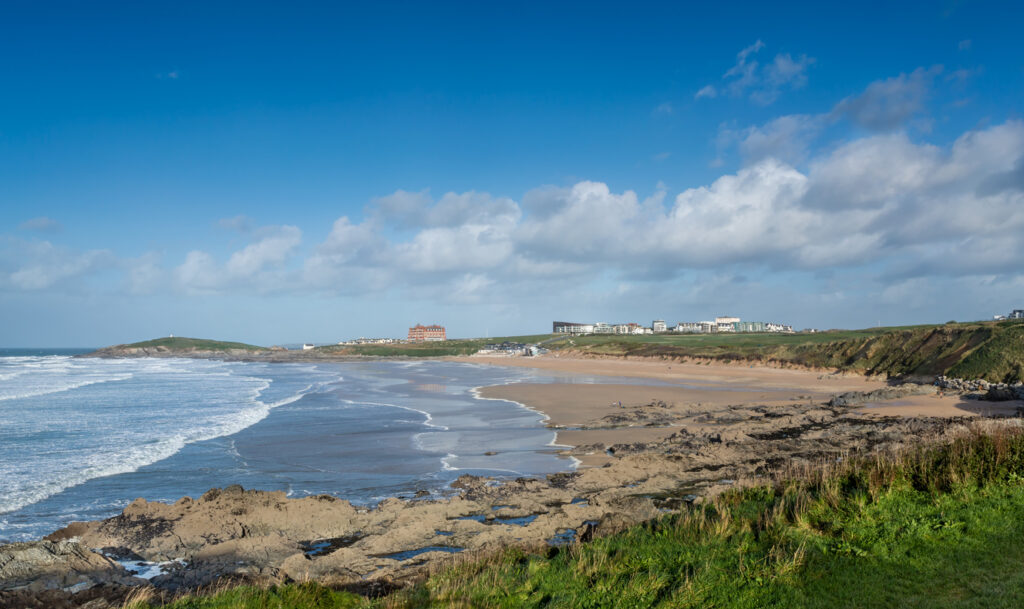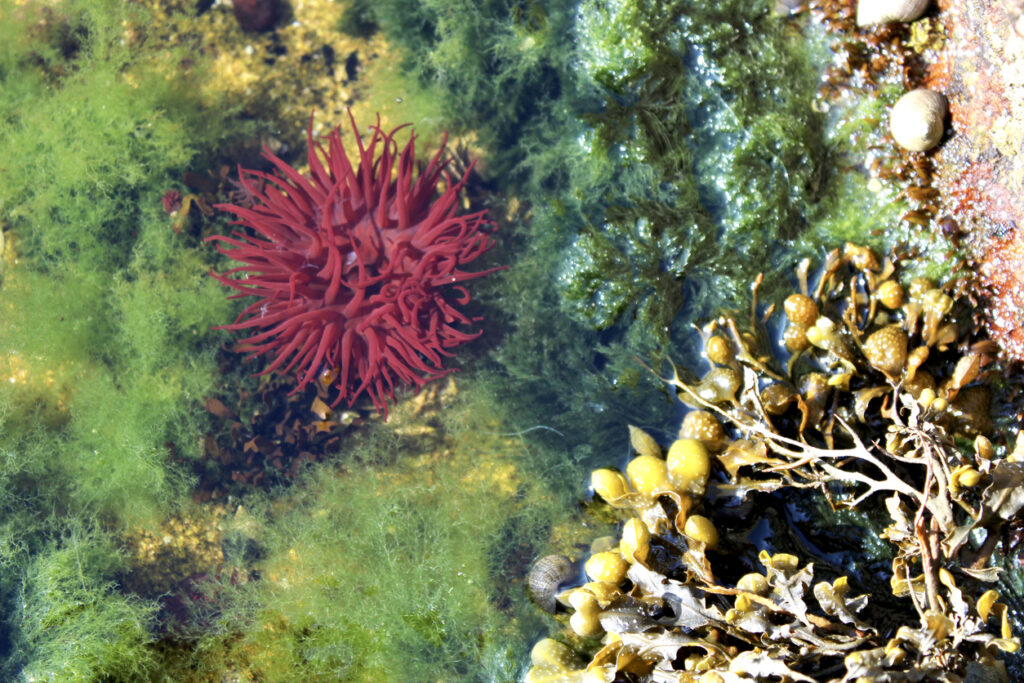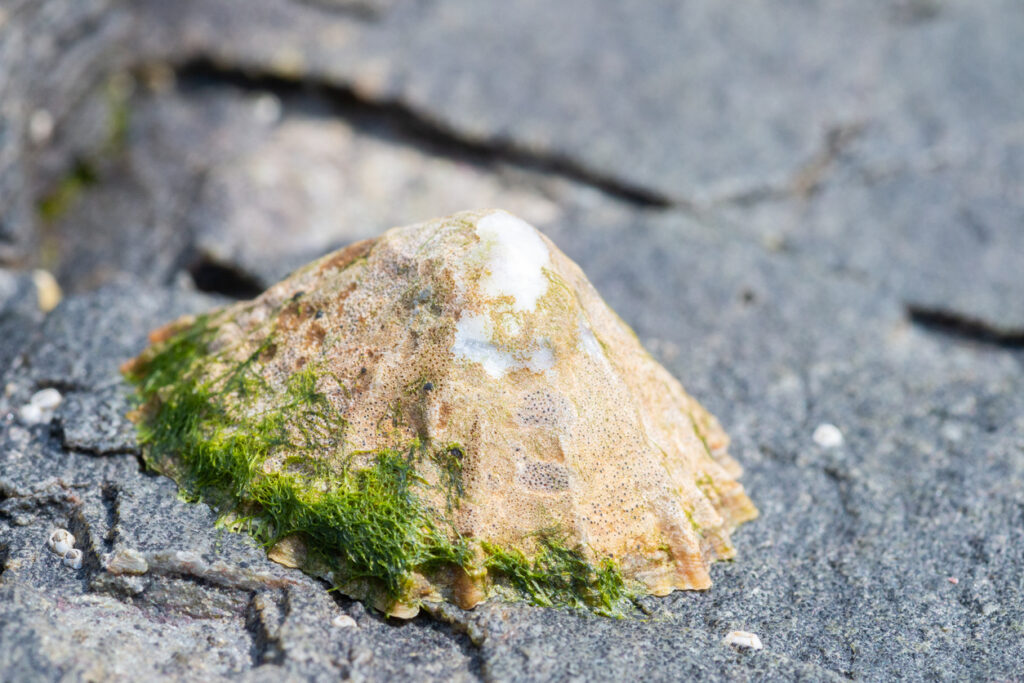If you’re looking for something a little different during the summer holidays, rockpooling can be a fascinating activity for kids and adults alike! It’s a great way to spend a day as a family, giving you the opportunity for a glimpse into the underwater world up close. Not only is rockpooling enjoyable, but it’s also a way to educate the whole family on sea creatures and have the chance to handle some of them – with extreme care, of course.
When the tide goes out, pockets of seawater are left behind in the dips of the shore, providing a vital refuge for animals that are temporarily displaced. It can be a harsh habitat for many of the creatures that end up in the rockpools, dealing with the likes of sun exposure, changing temperatures and rainwater. There’s a lot to learn, but it’s so important that rockpooling is done responsibly. With that in mind, we offer some top tips for rockpooling and how to do it with caution.
Where can you go rockpooling in Newquay?
Cornwall as a whole is excellent for rockpooling thanks to its vast coastline. Pairing together a traditional summertime destination with a classic seaside activity, Cornwall is home to beautiful beaches that make for the perfect rockpooling environment.
Newquay in particular is home to a few locations if you’re hoping to head out in search of marine life. Fistral Beach, while primarily known for its surfing opportunities, is a great place to start. Making for a great family day out, you can enjoy rockpooling and work up an appetite for one of the many eating establishments right on the beach.
You can also find rockpools at Watergate Bay, just outside of Newquay. With two miles of sand, Watergate Bay is popular with families with several access paths and car parks. Just slightly further up the coast is Mawgan Porth Beach, perfect for avoiding the summer crowds and known for its rockpools and caves.

The importance of responsible rockpooling
When coming into contact with any aspect of nature, it’s incredibly important to be responsible and respectful. Rockpools offer a safe haven for a multitude of different creatures like Hermit crabs, common shore crabs, limpets, common starfish and beadlet anemone, so it’s crucial that you are gentle and look after any animals you may find. Below, we’ll go through some of the best tips for rockpooling to help you see as many creatures as possible, as well as understanding how to do it responsibly.
1. Spring and summer tides are best for rockpooling
Rockpooling is best done when the weather is calm. Not only does this give you a better chance of spotting some fascinating creatures, but it’s also safer for you on the shore. Make sure you check the weather forecast, as the great British summer isn’t always what we expect!
Going rockpooling at low tide is the preferred way to do it, as the sea has gone further out and is at its lowest level. This is what exposes the rockpools on the beach, which would have been underwater at high tide. There are many guides online to help you find when low tide is for the beach you have chosen to visit. Look for when the low tide point is at a suitable time in the day for you to visit, and give yourself plenty of time before the tide comes back in!

2. Wear the appropriate clothing
Typical beachwear isn’t the most suitable for rockpooling, and you might want to pack extra clothes for if the weather suddenly turns one way or the other! It’s important to remember that coastal rocks are usually slippery and some can be sharp, so wearing the right shoes can make a big difference. Anything with good grip will ensure you’re able to rockpool with ease – wellies are perfect.
Consider a waterproof jacket, suncream and maybe even a towel – just in case you get a little closer to the rockpools than you anticipated!
3. Observe quietly
The animals living in the rockpools, if only temporarily, are doing their very best to survive in the conditions until the tide comes back in. They will naturally be extra wary of their surroundings, so approach and observe quietly and calmly. Shadows or making splashes in the rockpool will likely startle the sea creatures and could make them harder to see.
In many cases, it can be more effective to stay in one area and just observe for a little while, and before long you will probably see something moving or coming out from its hiding place!
4. Don’t remove any creatures attached to rocks
Creatures such as limpets, anemones and algae typically cling to rocks for survival. These rocks are its home, and they may become more vulnerable if moved. Limpets for example are firmly clamped on to the side of rocks until the tide comes back in. If you remove a stuck limpet, you might damage the muscles it uses to help it cling to the rock.
Instead, it’s much safer for the animals to watch them from a distance or use a magnifying glass if you fancy a closer look!

5. Put everything back where you found it
Similarly, if you do decide to pick up any the creatures or put some in a bucket temporarily to examine them, it’s super important to put them back exactly where you found them. This reduces the risk of displacing the animals even further, whether it’s a piece of seaweed or a crab. If you need to lift a rock or turn one over as you’re searching, be sure to place it back in its original place.
Rockpooling is such a fun activity for the whole family to enjoy. If you’re looking for even more sea creatures to discover and learn more about, why not visit us at Blue Reef Aquarium Newquay? Check out our extensive list of animals that you will be able to spot across our fantastic exhibits.
